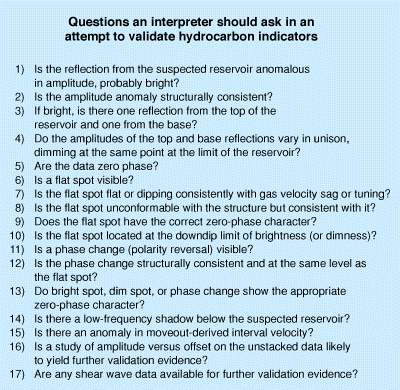1. n. [Geophysics]
A type of seismic amplitude anomaly, seismic event, or characteristic of seismic data that can occur in a hydrocarbon-bearing reservoir. Although "bright spots," as hydrocarbon indicators are loosely called, can originate in numerous ways, they are not all indicative of the presence of hydrocarbons. Criteria to distinguish true hydrocarbon indicators (sometimes called HCIs) from other types of amplitude anomalies include:
Hydrocarbon indicators are most common in relatively young, unconsolidated siliciclastic sediments with large impedance contrasts across lithologic boundaries, such as those in the Gulf of Mexico and offshore western Africa. An ongoing issue in exploration for hydrocarbon indicators is the difficulty in distinguishing between gas accumulations and water with a low degree of gas saturation ("fizz water").
Alternate Form: bright spot
See related terms: amplitude anomaly, amplitude variation with offset, attribute, diffraction, dim spot, gas chimney, phase, push-down, velocity
